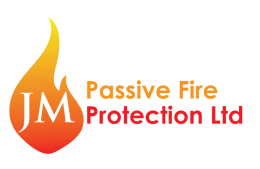Fire boarding refers to the process of installing fire-resistant boards or panels in a building to enhance its fire protection. These boards are typically made from fire-resistant materials designed to prevent or slow down the spread of fire, providing additional time for building occupants to evacuate and for fire services to respond. Fire boarding is often used in key structural areas like walls, ceilings, steel beams, and around ductwork to improve the building’s fire resistance rating.
Key Features of Fire Boarding:
- Material:
- Gypsum-based boards: Fire-rated plasterboard is commonly used in fire boarding. These boards have a reinforced core made of gypsum, often with glass fibers or other additives to improve fire resistance.
- Calcium Silicate: Another popular material for fire boards, calcium silicate is non-combustible, highly durable, and offers excellent fire resistance.
- Vermiculite or Mineral Fiber Boards: These materials are also used for fire protection, particularly in environments requiring higher levels of fire resistance.
- Cementitious Boards: Cement-based boards offer strong fire resistance and are often used for applications that require exposure to high temperatures.
- Fire Resistance Ratings:
Fire boarding materials are rated for the duration they can resist fire, typically ranging from 30 minutes to 120 minutes or more, depending on the board type and thickness. The goal is to maintain the structural integrity of the building long enough to allow safe evacuation and firefighting operations. - Applications:
- Walls and Ceilings: Fire boards can be installed as part of wall or ceiling systems to enhance fire resistance and ensure compartmentalization within a building. This prevents fire from spreading between rooms or floors.
- Encasing Structural Steel: Steel beams or columns lose strength quickly when exposed to high heat during a fire. Fire boarding encases these elements, protecting them from direct exposure to flames and helping them maintain structural integrity longer.
- Fire Protection for Ducts: Ventilation or HVAC ducts can allow fire and smoke to travel between compartments in a building. Fire-rated duct boards can be used to protect these systems.
- Around Fire Doors: Fire boarding is also installed around fire-rated doors or openings to ensure that the surrounding structure meets the required fire safety standards.
- Installation:
- Fire boards are usually installed by screwing or fixing them onto a framework made of steel or timber. The installation process must be meticulous, with all joints properly sealed to prevent fire from penetrating through small gaps.
- In the case of structural steel protection, fire boards are cut and installed around beams or columns to provide a snug fit, ensuring comprehensive protection.
Importance of Fire Boarding:
- Fire Safety: Fire boarding helps contain a fire within specific areas of a building, preventing rapid fire spread and allowing more time for safe evacuation.
- Structural Integrity: By protecting critical structural components (like steel beams or load-bearing walls), fire boarding helps prevent early structural collapse during a fire.
- Regulatory Compliance: Building regulations often require specific fire resistance ratings in certain areas (such as stairwells, corridors, or high-rise structures), and fire boarding helps meet these requirements.
- Protection of Critical Spaces: Fire boarding can be used to safeguard critical areas, like server rooms or electrical rooms, where sensitive equipment needs extra protection.
Types of Fire Boards:
- Fire-Rated Plasterboard: Used for general fire protection in walls and ceilings.
- Intumescent Fire Boards: Expand when exposed to heat, creating an insulating barrier that delays fire spread.
- High-Temperature Resistant Boards: Used in areas exposed to extreme heat, such as industrial environments or around fireplaces.
In summary, fire boarding is a vital passive fire protection strategy, enhancing a building’s ability to resist fire and protect lives and property by slowing down fire spread and maintaining structural stability.
For further information contact us below and one the team will get back to you
